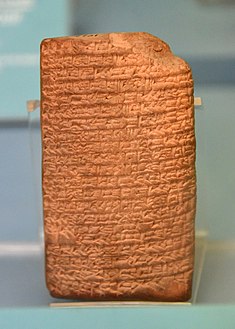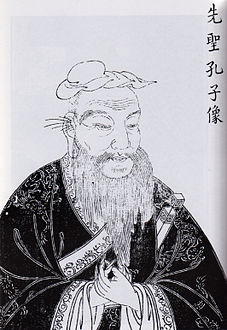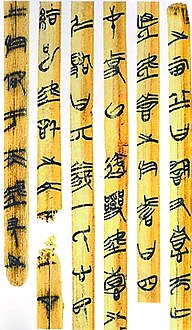Poetry
| Literature | ||||||
|---|---|---|---|---|---|---|
 | ||||||
| Oral literature | ||||||
| Major written forms | ||||||
|
||||||
| Prose genres | ||||||
|
||||||
| Poetry genres | ||||||
|
||||||
| Dramatic genres | ||||||
| History | ||||||
| Lists and outlines | ||||||
| Theory and criticism | ||||||
|
| ||||||
Poetry (a term derived from the
Poetry has a long and varied
Early poems in the Eurasian continent evolved from folk songs such as the Chinese Shijing as well as from religious hymns (the Sanskrit Rigveda, the Zoroastrian Gathas, the Hurrian songs, and the Hebrew Psalms); or from a need to retell oral epics, as with the Egyptian Story of Sinuhe, Indian epic poetry, and the Homeric epics, the Iliad and the Odyssey.
Ancient Greek attempts to define poetry, such as
Poetry uses forms and conventions to suggest differential
Some poetry types are unique to particular
Poets – as, from the
A
In first-person poems, the lyrics are spoken by an "I", a character who may be termed the speaker, distinct from the poet (the author). Thus if, for example, a poem asserts, "I killed my enemy in Reno", it is the speaker, not the poet, who is the killer (unless this "confession" is a form of metaphor which needs to be considered in closer context – via close reading).
History
Early works
Some scholars believe that the art of poetry may predate literacy, and developed from folk epics and other oral genres.[9][10] Others, however, suggest that poetry did not necessarily predate writing.[11]
The oldest surviving epic poem, the Epic of Gilgamesh, dates from the 3rd millennium BCE in Sumer (in Mesopotamia, present-day Iraq), and was written in cuneiform script on clay tablets and, later, on papyrus.[12] The Istanbul tablet#2461, dating to c. 2000 BCE, describes an annual rite in which the king symbolically married and mated with the goddess Inanna to ensure fertility and prosperity; some have labelled it the world's oldest love poem.[13][14] An example of Egyptian epic poetry is The Story of Sinuhe (c. 1800 BCE).[15]
Other ancient epics includes the Greek Iliad and the Odyssey; the Persian Avestan books (the Yasna); the Roman national epic, Virgil's Aeneid (written between 29 and 19 BCE); and the Indian epics, the Ramayana and the Mahabharata. Epic poetry appears to have been composed in poetic form as an aid to memorization and oral transmission in ancient societies.[11][16]
Other forms of poetry, including such ancient collections of religious
The efforts of ancient thinkers to determine what makes poetry distinctive as a form, and what distinguishes good poetry from bad, resulted in "poetics"—the study of the aesthetics of poetry.[19] Some ancient societies, such as China's through the Shijing, developed canons of poetic works that had ritual as well as aesthetic importance.[20] More recently, thinkers have struggled to find a definition that could encompass formal differences as great as those between Chaucer's Canterbury Tales and Matsuo Bashō's Oku no Hosomichi, as well as differences in content spanning Tanakh religious poetry, love poetry, and rap.[21]
Until recently, the earliest examples of stressed poetry had been thought to be works composed by Romanos the Melodist (fl. 6th century CE). However, Tim Whitmarsh writes that an inscribed Greek poem predated Romanos' stressed poetry. [22][23][24]
-
The oldest known love poem. Sumerian terracotta tablet#2461 from Nippur, Iraq. Ur III period, 2037–2029 BCE. Ancient Orient Museum, Istanbul
-
The philosopher Confucius was influential in the developed approach to poetry and ancient music theory.
Western traditions

Classical thinkers in the West employed classification as a way to define and assess the quality of poetry. Notably, the existing fragments of Aristotle's Poetics describe three genres of poetry—the epic, the comic, and the tragic—and develop rules to distinguish the highest-quality poetry in each genre, based on the perceived underlying purposes of the genre.[25] Later aestheticians identified three major genres: epic poetry, lyric poetry, and dramatic poetry, treating comedy and tragedy as subgenres of dramatic poetry.[26]
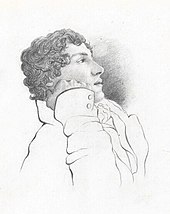
Aristotle's work was influential throughout the Middle East during the Islamic Golden Age,[27] as well as in Europe during the Renaissance.[28] Later poets and aestheticians often distinguished poetry from, and defined it in opposition to prose, which they generally understood as writing with a proclivity to logical explication and a linear narrative structure.[29]
This does not imply that poetry is illogical or lacks narration, but rather that poetry is an attempt to render the beautiful or sublime without the burden of engaging the logical or narrative thought-process. English Romantic poet John Keats termed this escape from logic "negative capability".[30] This "romantic" approach views form as a key element of successful poetry because form is abstract and distinct from the underlying notional logic. This approach remained influential into the 20th century.[31]
During the 18th and 19th centuries, there was also substantially more interaction among the various poetic traditions, in part due to the spread of European colonialism and the attendant rise in global trade.[32] In addition to a boom in translation, during the Romantic period numerous ancient works were rediscovered.[33]
20th-century and 21st-century disputes
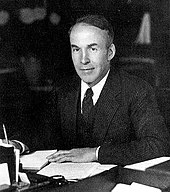
Some 20th-century literary theorists rely less on the ostensible opposition of prose and poetry, instead focusing on the poet as simply one who creates using language, and poetry as what the poet creates.[34] The underlying concept of the poet as creator is not uncommon, and some modernist poets essentially do not distinguish between the creation of a poem with words, and creative acts in other media. Other modernists challenge the very attempt to define poetry as misguided.[35]
The rejection of traditional forms and structures for poetry that began in the first half of the 20th century coincided with a questioning of the purpose and meaning of traditional definitions of poetry and of distinctions between poetry and prose, particularly given examples of poetic prose and prosaic poetry. Numerous modernist poets have written in non-traditional forms or in what traditionally would have been considered prose, although their writing was generally infused with poetic diction and often with rhythm and tone established by non-metrical means. While there was a substantial formalist reaction within the modernist schools to the breakdown of structure, this reaction focused as much on the development of new formal structures and syntheses as on the revival of older forms and structures.[36]
Postmodernism goes beyond modernism's emphasis on the creative role of the poet, to emphasize the role of the reader of a text (hermeneutics), and to highlight the complex cultural web within which a poem is read.[37] Today, throughout the world, poetry often incorporates poetic form and diction from other cultures and from the past, further confounding attempts at definition and classification that once made sense within a tradition such as the Western canon.[38]
The early 21st-century poetic tradition appears to continue to strongly orient itself to earlier precursor poetic traditions such as those initiated by Whitman, Emerson, and Wordsworth. The literary critic Geoffrey Hartman (1929–2016) used the phrase "the anxiety of demand" to describe the contemporary response to older poetic traditions as "being fearful that the fact no longer has a form",[39] building on a trope introduced by Emerson. Emerson had maintained that in the debate concerning poetic structure where either "form" or "fact" could predominate, that one need simply "Ask the fact for the form." This has been challenged at various levels by other literary scholars such as Harold Bloom (1930–2019), who has stated: "The generation of poets who stand together now, mature and ready to write the major American verse of the twenty-first century, may yet be seen as what Stevens called 'a great shadow's last embellishment,' the shadow being Emerson's."[40]
Elements
Prosody
Prosody is the study of the meter, rhythm, and intonation of a poem. Rhythm and meter are different, although closely related.[41] Meter is the definitive pattern established for a verse (such as iambic pentameter), while rhythm is the actual sound that results from a line of poetry. Prosody also may be used more specifically to refer to the scanning of poetic lines to show meter.[42]
Rhythm

The methods for creating poetic rhythm vary across languages and between poetic traditions. Languages are often described as having timing set primarily by
Metrical rhythm generally involves precise arrangements of stresses or syllables into repeated patterns called
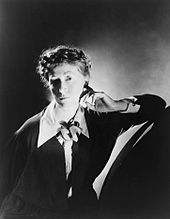
The chief device of ancient Hebrew Biblical poetry, including many of the psalms, was parallelism, a rhetorical structure in which successive lines reflected each other in grammatical structure, sound structure, notional content, or all three. Parallelism lent itself to antiphonal or call-and-response performance, which could also be reinforced by intonation. Thus, Biblical poetry relies much less on metrical feet to create rhythm, but instead creates rhythm based on much larger sound units of lines, phrases and sentences.[48] Some classical poetry forms, such as Venpa of the Tamil language, had rigid grammars (to the point that they could be expressed as a context-free grammar) which ensured a rhythm.[49]
Classical Chinese poetics, based on the tone system of Middle Chinese, recognized two kinds of tones: the level (平 píng) tone and the oblique (仄 zè) tones, a category consisting of the rising (上 sháng) tone, the departing (去 qù) tone and the entering (入 rù) tone. Certain forms of poetry placed constraints on which syllables were required to be level and which oblique.
The formal patterns of meter used in Modern English verse to create rhythm no longer dominate contemporary English poetry. In the case of free verse, rhythm is often organized based on looser units of cadence rather than a regular meter. Robinson Jeffers, Marianne Moore, and William Carlos Williams are three notable poets who reject the idea that regular accentual meter is critical to English poetry.[50] Jeffers experimented with sprung rhythm as an alternative to accentual rhythm.[51]
Meter
In the Western poetic tradition, meters are customarily grouped according to a characteristic

- iamb – one unstressed syllable followed by a stressed syllable (e.g. des-cribe, in-clude, re-tract)
- trochee—one stressed syllable followed by an unstressed syllable (e.g. pic-ture, flow-er)
- dactyl – one stressed syllable followed by two unstressed syllables (e.g. an-no-tate, sim-i-lar)
- anapaest—two unstressed syllables followed by one stressed syllable (e.g. com-pre-hend)
- spondee—two stressed syllables together (e.g. heart-beat, four-teen)
- pyrrhic—two unstressed syllables together (rare, usually used to end dactylic hexameter)
There are a wide range of names for other types of feet, right up to a
Each of these types of feet has a certain "feel," whether alone or in combination with other feet. The iamb, for example, is the most natural form of rhythm in the English language, and generally produces a subtle but stable verse.[60] Scanning meter can often show the basic or fundamental pattern underlying a verse, but does not show the varying degrees of stress, as well as the differing pitches and lengths of syllables.[61]
There is debate over how useful a multiplicity of different "feet" is in describing meter. For example, Robert Pinsky has argued that while dactyls are important in classical verse, English dactylic verse uses dactyls very irregularly and can be better described based on patterns of iambs and anapests, feet which he considers natural to the language.[62] Actual rhythm is significantly more complex than the basic scanned meter described above, and many scholars have sought to develop systems that would scan such complexity. Vladimir Nabokov noted that overlaid on top of the regular pattern of stressed and unstressed syllables in a line of verse was a separate pattern of accents resulting from the natural pitch of the spoken words, and suggested that the term "scud" be used to distinguish an unaccented stress from an accented stress.[63]
Metrical patterns

Different traditions and genres of poetry tend to use different meters, ranging from the Shakespearean

Some common metrical patterns, with notable examples of poets and poems who use them, include:
- Sonnets)[66]
- Dactylic hexameter (Homer, Iliad; Virgil, Aeneid)[67]
- Iambic tetrameter (Andrew Marvell, "To His Coy Mistress"; Alexander Pushkin, Eugene Onegin; Robert Frost, Stopping by Woods on a Snowy Evening)[68]
- Trochaic octameter (Edgar Allan Poe, "The Raven")[69]
- Trochaic tetrameter (Henry Wadsworth Longfellow, The Song of Hiawatha; the Finnish national epic, The Kalevala, is also in trochaic tetrameter, the natural rhythm of Finnish and Estonian)
Rhyme, alliteration, assonance
Rhyme, alliteration, assonance and
Rhyme consists of identical ("hard-rhyme") or similar ("soft-rhyme") sounds placed at the ends of lines or at locations within lines ("internal rhyme"). Languages vary in the richness of their rhyming structures; Italian, for example, has a rich rhyming structure permitting maintenance of a limited set of rhymes throughout a lengthy poem. The richness results from word endings that follow regular forms. English, with its irregular word endings adopted from other languages, is less rich in rhyme.[73] The degree of richness of a language's rhyming structures plays a substantial role in determining what poetic forms are commonly used in that language.[74]
Alliteration is the repetition of letters or letter-sounds at the beginning of two or more words immediately succeeding each other, or at short intervals; or the recurrence of the same letter in accented parts of words. Alliteration and assonance played a key role in structuring early Germanic, Norse and Old English forms of poetry. The alliterative patterns of early Germanic poetry interweave meter and alliteration as a key part of their structure, so that the metrical pattern determines when the listener expects instances of alliteration to occur. This can be compared to an ornamental use of alliteration in most Modern European poetry, where alliterative patterns are not formal or carried through full stanzas. Alliteration is particularly useful in languages with less rich rhyming structures.
Assonance, where the use of similar vowel sounds within a word rather than similar sounds at the beginning or end of a word, was widely used in skaldic poetry but goes back to the Homeric epic.[75] Because verbs carry much of the pitch in the English language, assonance can loosely evoke the tonal elements of Chinese poetry and so is useful in translating Chinese poetry.[76] Consonance occurs where a consonant sound is repeated throughout a sentence without putting the sound only at the front of a word. Consonance provokes a more subtle effect than alliteration and so is less useful as a structural element.[74]
Rhyming schemes

In many languages, including Arabic and modern European languages, poets use rhyme in set patterns as a structural element for specific poetic forms, such as
Most rhyme schemes are described using letters that correspond to sets of rhymes, so if the first, second and fourth lines of a quatrain rhyme with each other and the third line do not rhyme, the quatrain is said to have an AA BA rhyme scheme. This rhyme scheme is the one used, for example, in the rubaiyat form.[81] Similarly, an A BB A quatrain (what is known as "enclosed rhyme") is used in such forms as the Petrarchan sonnet.[82] Some types of more complicated rhyming schemes have developed names of their own, separate from the "a-bc" convention, such as the ottava rima and terza rima.[83] The types and use of differing rhyming schemes are discussed further in the main article.
Form in poetry
Poetic form is more flexible in modernist and post-modernist poetry and continues to be less structured than in previous literary eras. Many modern poets eschew recognizable structures or forms and write in free verse. Free verse is, however, not "formless" but composed of a series of more subtle, more flexible prosodic elements.[84] Thus poetry remains, in all its styles, distinguished from prose by form;[85] some regard for basic formal structures of poetry will be found in all varieties of free verse, however much such structures may appear to have been ignored.[86] Similarly, in the best poetry written in classic styles there will be departures from strict form for emphasis or effect.[87]
Among major structural elements used in poetry are the line, the stanza or verse paragraph, and larger combinations of stanzas or lines such as cantos. Also sometimes used are broader visual presentations of words and calligraphy. These basic units of poetic form are often combined into larger structures, called poetic forms or poetic modes (see the following section), as in the sonnet.
Lines and stanzas
Poetry is often separated into lines on a page, in a process known as
Lines of poems are often organized into
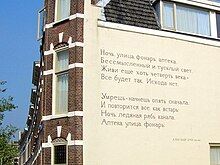
Other poems may be organized into verse paragraphs, in which regular rhymes with established rhythms are not used, but the poetic tone is instead established by a collection of rhythms, alliterations, and rhymes established in paragraph form.[90] Many medieval poems were written in verse paragraphs, even where regular rhymes and rhythms were used.[91]
In many forms of poetry, stanzas are interlocking, so that the rhyming scheme or other structural elements of one stanza determine those of succeeding stanzas. Examples of such interlocking stanzas include, for example, the ghazal and the villanelle, where a refrain (or, in the case of the villanelle, refrains) is established in the first stanza which then repeats in subsequent stanzas. Related to the use of interlocking stanzas is their use to separate thematic parts of a poem. For example, the strophe, antistrophe and epode of the ode form are often separated into one or more stanzas.[92]
In some cases, particularly lengthier formal poetry such as some forms of epic poetry, stanzas themselves are constructed according to strict rules and then combined. In
Visual presentation
Even before the advent of printing, the visual appearance of poetry often added meaning or depth. Acrostic poems conveyed meanings in the initial letters of lines or in letters at other specific places in a poem.[94] In Arabic, Hebrew and Chinese poetry, the visual presentation of finely calligraphed poems has played an important part in the overall effect of many poems.[95]
With the advent of printing, poets gained greater control over the mass-produced visual presentations of their work. Visual elements have become an important part of the poet's toolbox, and many poets have sought to use visual presentation for a wide range of purposes. Some Modernist poets have made the placement of individual lines or groups of lines on the page an integral part of the poem's composition. At times, this complements the poem's rhythm through visual caesuras of various lengths, or creates juxtapositions so as to accentuate meaning, ambiguity or irony, or simply to create an aesthetically pleasing form. In its most extreme form, this can lead to concrete poetry or asemic writing.[96][97]
Diction
Poetic diction treats the manner in which language is used, and refers not only to the sound but also to the underlying meaning and its interaction with sound and form.
Poetic diction can include rhetorical devices such as simile and metaphor, as well as tones of voice, such as irony. Aristotle wrote in the Poetics that "the greatest thing by far is to be a master of metaphor."[103] Since the rise of Modernism, some poets have opted for a poetic diction that de-emphasizes rhetorical devices, attempting instead the direct presentation of things and experiences and the exploration of tone.[104] On the other hand, Surrealists have pushed rhetorical devices to their limits, making frequent use of catachresis.[105]
Another element of poetic diction can be the use of vivid
Forms

Specific poetic forms have been developed by many cultures. In more developed, closed or "received" poetic forms, the rhyming scheme, meter and other elements of a poem are based on sets of rules, ranging from the relatively loose rules that govern the construction of an elegy to the highly formalized structure of the ghazal or villanelle.[110] Described below are some common forms of poetry widely used across a number of languages. Additional forms of poetry may be found in the discussions of the poetry of particular cultures or periods and in the glossary.
Sonnet

Among the most common forms of poetry, popular from the
Sonnets of all types often make use of a volta, or "turn," a point in the poem at which an idea is turned on its head, a question is answered (or introduced), or the subject matter is further complicated. This volta can often take the form of a "but" statement contradicting or complicating the content of the earlier lines. In the Petrarchan sonnet, the turn tends to fall around the division between the first two quatrains and the sestet, while English sonnets usually place it at or near the beginning of the closing couplet.
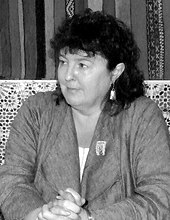
Sonnets are particularly associated with high poetic diction, vivid imagery, and romantic love, largely due to the influence of Petrarch as well as of early English practitioners such as
Shi
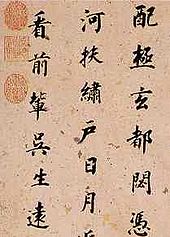
Shi (
Villanelle

The villanelle is a nineteen-line poem made up of five triplets with a closing quatrain; the poem is characterized by having two refrains, initially used in the first and third lines of the first stanza, and then alternately used at the close of each subsequent stanza until the final quatrain, which is concluded by the two refrains. The remaining lines of the poem have an AB alternating rhyme.[121] The villanelle has been used regularly in the English language since the late 19th century by such poets as Dylan Thomas,[122] W. H. Auden,[123] and Elizabeth Bishop.[124]
Limerick
A limerick is a poem that consists of five lines and is often humorous. Rhythm is very important in limericks for the first, second and fifth lines must have seven to ten syllables. However, the third and fourth lines only need five to seven. Lines 1, 2 and 5 rhyme with each other, and lines 3 and 4 rhyme with each other. Practitioners of the limerick included Edward Lear, Lord Alfred Tennyson, Rudyard Kipling, Robert Louis Stevenson.[125]
Tanka

Tanka is a form of unrhymed Japanese poetry, with five sections totalling 31 on (phonological units identical to morae), structured in a 5–7–5–7–7 pattern.[126] There is generally a shift in tone and subject matter between the upper 5–7–5 phrase and the lower 7–7 phrase. Tanka were written as early as the Asuka period by such poets as Kakinomoto no Hitomaro (fl. late 7th century), at a time when Japan was emerging from a period where much of its poetry followed Chinese form.[127] Tanka was originally the shorter form of Japanese formal poetry (which was generally referred to as "waka"), and was used more heavily to explore personal rather than public themes. By the tenth century, tanka had become the dominant form of Japanese poetry, to the point where the originally general term waka ("Japanese poetry") came to be used exclusively for tanka. Tanka are still widely written today.[128]
Haiku
Haiku is a popular form of unrhymed Japanese poetry, which evolved in the 17th century from the hokku, or opening verse of a renku.[129] Generally written in a single vertical line, the haiku contains three sections totalling 17 on (morae), structured in a 5–7–5 pattern. Traditionally, haiku contain a kireji, or cutting word, usually placed at the end of one of the poem's three sections, and a kigo, or season-word.[130] The most famous exponent of the haiku was Matsuo Bashō (1644–1694). An example of his writing:[131]
- 富士の風や扇にのせて江戸土産
- fuji no kaze ya oogi ni nosete Edo miyage
- the wind of Mt. Fuji
- I've brought on my fan!
- a gift from Edo
Khlong
The khlong (โคลง, [kʰlōːŋ]) is among the oldest Thai poetic forms. This is reflected in its requirements on the tone markings of certain syllables, which must be marked with mai ek (ไม้เอก, Thai pronunciation: [máj èːk], ◌่) or mai tho (ไม้โท, [máj tʰōː], ◌้). This was likely derived from when the Thai language had three tones (as opposed to today's five, a split which occurred during the Ayutthaya Kingdom period), two of which corresponded directly to the aforementioned marks. It is usually regarded as an advanced and sophisticated poetic form.[132]
In khlong, a stanza (bot, บท, Thai pronunciation: [bòt]) has a number of lines (bat, บาท, Thai pronunciation: [bàːt], from Pali and Sanskrit pāda), depending on the type. The bat are subdivided into two wak (วรรค, Thai pronunciation: [wák], from Sanskrit varga).[note 2] The first wak has five syllables, the second has a variable number, also depending on the type, and may be optional. The type of khlong is named by the number of bat in a stanza; it may also be divided into two main types: khlong suphap (โคลงสุภาพ, [kʰlōːŋ sù.pʰâːp]) and khlong dan (โคลงดั้น, [kʰlōːŋ dân]). The two differ in the number of syllables in the second wak of the final bat and inter-stanza rhyming rules.[132]
Khlong si suphap
The khlong si suphap (โคลงสี่สุภาพ,
Ode
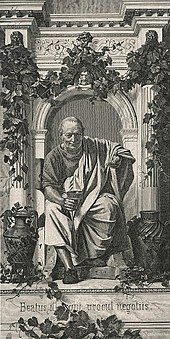
Odes were first developed by poets writing in ancient Greek, such as Pindar, and Latin, such as Horace. Forms of odes appear in many of the cultures that were influenced by the Greeks and Latins.[133] The ode generally has three parts: a strophe, an antistrophe, and an epode. The strophe and the antistrophe of the ode possess similar metrical structures and, depending on the tradition, similar rhyme structures. In contrast, the epode is written with a different scheme and structure. Odes have a formal poetic diction and generally deal with a serious subject. The strophe and antistrophe look at the subject from different, often conflicting, perspectives, with the epode moving to a higher level to either view or resolve the underlying issues. Odes are often intended to be recited or sung by two choruses (or individuals), with the first reciting the strophe, the second the antistrophe, and both together the epode.[134] Over time, differing forms for odes have developed with considerable variations in form and structure, but generally showing the original influence of the Pindaric or Horatian ode. One non-Western form which resembles the ode is the qasida in Arabic poetry.[135]
Ghazal
The ghazal (also ghazel, gazel, gazal, or gozol) is a form of poetry common in Arabic, Bengali, Persian and Urdu. In classic form, the ghazal has from five to fifteen rhyming couplets that share a refrain at the end of the second line. This refrain may be of one or several syllables and is preceded by a rhyme. Each line has an identical meter and is of the same length.[136] The ghazal often reflects on a theme of unattainable love or divinity.[137]
As with other forms with a long history in many languages, many variations have been developed, including forms with a quasi-musical poetic diction in
Genres
In addition to specific forms of poems, poetry is often thought of in terms of different genres and subgenres. A poetic genre is generally a tradition or classification of poetry based on the subject matter, style, or other broader literary characteristics.[148] Some commentators view genres as natural forms of literature. Others view the study of genres as the study of how different works relate and refer to other works.[149]
Narrative poetry
Narrative poetry is a genre of poetry that tells a
Notable narrative poets have included
Lyric poetry
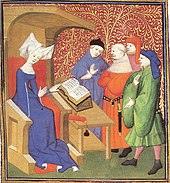
Lyric poetry is a genre that, unlike epic and dramatic poetry, does not attempt to tell a story but instead is of a more personal nature. Poems in this genre tend to be shorter, melodic, and contemplative. Rather than depicting characters and actions, it portrays the poet's own feelings, states of mind, and perceptions.[151] Notable poets in this genre include Christine de Pizan, John Donne, Charles Baudelaire, Gerard Manley Hopkins, Antonio Machado, and Edna St. Vincent Millay.
Epic poetry
Epic poetry is a genre of poetry, and a major form of
Satirical poetry
Poetry can be a powerful vehicle for
The same is true of the English satirical tradition.
Elegy

An elegy is a mournful, melancholy or plaintive poem, especially a lament for the dead or a funeral song. The term "elegy," which originally denoted a type of poetic meter (elegiac meter), commonly describes a poem of mourning. An elegy may also reflect something that seems to the author to be strange or mysterious. The elegy, as a reflection on a death, on a sorrow more generally, or on something mysterious, may be classified as a form of lyric poetry.[156][157]
Notable practitioners of elegiac poetry have included
Verse fable
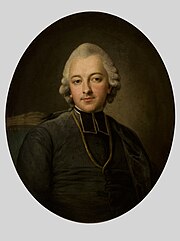
The fable is an ancient
Notable verse fabulists have included
Dramatic poetry
Dramatic poetry is
Speculative poetry
Speculative poetry, also known as fantastic poetry (of which weird or macabre poetry is a major sub-classification), is a poetic genre which deals thematically with subjects which are "beyond reality", whether via
Prose poetry
Prose poetry is a hybrid genre that shows attributes of both prose and poetry. It may be indistinguishable from the
Light poetry

Light poetry, or
While light poetry is sometimes condemned as doggerel, or thought of as poetry composed casually, humor often makes a serious point in a subtle or subversive way. Many of the most renowned "serious" poets have also excelled at light verse. Notable writers of light poetry include Lewis Carroll, Ogden Nash, X. J. Kennedy, Willard R. Espy, Shel Silverstein, Gavin Ewart and Wendy Cope.
Slam poetry
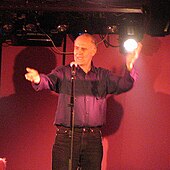
Slam poetry as a genre originated in 1986 in
Performance poetry
Performance poetry, similar to slam in that it occurs before an audience, is a genre of poetry that may fuse a variety of disciplines in a performance of a text, such as dance, music, and other aspects of performance art.[174][175]
Language happenings
The term
See also
- Anti-poetry
- Digital poetry
- Glossary of poetry terms
- Improvisation
- List of poetry groups and movements
- Oral poetry
- Outline of poetry
- Persona poetry
- Phonestheme
- Phono-semantic matching
- Poetry reading
- Rhapsode
- Semantic differential
- Spoken word
Notes
- ^ The word "verse" functions here as a synecdoche which takes the poetic element of verse as representative of the entire art form. The word "verse" is often so used when comparing poetry to prose.
- ^ In literary studies, line in western poetry is translated as bat. However, in some forms, the unit is more equivalent to wak. To avoid confusion, this article will refer to wak and bat instead of line, which may refer to either.
References
Citations
- ^ "Poetry". Oxford Dictionaries. Oxford University Press. 2013. Archived from the original on 18 June 2013.
poetry [...] Literary work in which the expression of feelings and ideas is given intensity by the use of distinctive style and rhythm; poems collectively or as a genre of literature.
- ^ "Poetry". Merriam-Webster. 2013.
poetry [...] 2 : writing that formulates a concentrated imaginative awareness of experience in language chosen and arranged to create a specific emotional response through meaning, sound, and rhythm
- ^ "Poetry". Dictionary.com. 2013.
poetry [...] 1 the art of rhythmical composition, written or spoken, for exciting pleasure by beautiful, imaginative, or elevated thoughts.
- ^ Ruth Finnegan, Oral Literature in Africa, Open Book Publishers, 2012.
- ISBN 978-0-8147-9797-6.
- ISBN 978-0-15-180387-3.
- ISBN 978-0-19-510178-2.
- ISBN 978-1-86046-735-6.
- S2CID 143947520.
- ISBN 978-0-521-33794-6.
[...] poetry, tales, recitations of various kinds existed long before writing was introduced and these oral forms continued in modified 'oral' forms, even after the establishment of a written literature.
- ^ ISBN 978-0-521-33794-6.
- ^ The Epic of Gilgamesh. Translated by Sanders, N. K. (Revised ed.). Penguin Books. 1972. pp. 7–8.
- ^ Mark, Joshua J. (13 August 2014). "The World's Oldest Love Poem".
'[...] What I held in my hand was one of the oldest love songs written down by the hand of man [...].'
- ^ Arsu, Şebnem (14 February 2006). "Oldest Line in the World". The New York Times. Retrieved 1 May 2015.
A small tablet in a special display this month in the Istanbul Museum of the Ancient Orient is thought to be the oldest love poem ever found, the words of a lover from more than 4,000 years ago.
- ISBN 978-1-78570-603-5.
- ISBN 978-0-8014-8335-6..
- ISBN 978-0-02-908752-7.
- JSTOR 1399898.
- ISBN 978-0-7007-1223-6.
- ISBN 978-0-295-98787-3.
- ISBN 978-0-631-23200-1.
- ^ Jarrett A. Lobell (March–April 2022). "Poetic License". Archaeology Magazine. Archived from the original on 7 December 2023.
- ^ Alison Flood (8 September 2021). "'I don't care': text shows modern poetry began much earlier than believed". The Guardian. Archived from the original on 18 January 2024.
- S2CID 242230189.
- ISBN 978-0-14-044636-4.
- ISBN 978-0-415-28063-1.
- ISBN 978-90-04-11964-2.
- ISBN 978-0-8018-8055-1.
- ^ Kant, Immanuel (1914). Critique of Judgment. Translated by Bernard, J. H. Macmillan. p. 131. Kant argues that the nature of poetry as a self-consciously abstract and beautiful form raises it to the highest level among the verbal arts, with tone or music following it, and only after that the more logical and narrative prose.
- ISBN 978-1-4411-4724-0.
- ISBN 978-0-8195-6610-2.
- .
- ISBN 978-0-19-500206-5.
- ^ Wimsatt, William K. Jr.; Brooks, Cleanth (1957). Literary Criticism: A Short History. Vintage Books. p. 374.
- ISBN 978-0-8386-4105-7.
- ISBN 978-0-521-61815-1.
- Death of the Author". Image-Music-Text. Farrar, Straus & Giroux. pp. 142–148.
- ISBN 978-0-631-20052-9.
- ISBN 978-1349156177.
- ^
ISBN 978-1604135886. Retrieved 7 May 2019.
The generation of poets who stand together now, mature and ready to write the major American verse of the twenty-first century, may yet be seen as what Stevens called 'a great shadow's last embellishment,' the shadow being Emerson's.
- ^ Pinsky 1998, p. 52
- ^ Fussell 1965, pp. 20–21
- ^ Schülter, Julia (2005). Rhythmic Grammar. Walter de Gruyter. pp. 24, 304, 332.
- ISBN 978-0-521-77314-0.
- ^ Fussell 1965, p. 12
- ISBN 978-0-8166-1029-7.
- ^ Fussell 1965, pp. 75–76
- ISBN 978-1-58983-086-8.
- CiteSeerX 10.1.1.3.7738.
- ISBN 978-0-8101-1316-9.
- ^ Hollander 1981, p. 22
- ISBN 978-0-631-22589-8
- ^ Corn 1997, p. 24
- ^ Corn 1997, pp. 25, 34
- ^ a b Annis, William S. (January 2006). "Introduction to Greek Meter" (PDF). Aoidoi. pp. 1–15.
- ^ "Examples of English metrical systems" (PDF). Fondazione Universitaria in provincia di Belluno. Archived from the original (PDF) on 8 March 2012. Retrieved 10 December 2011.
- ^ Fussell 1965, pp. 23–24
- ^ "Portrait Bust". britishmuseum.org. The British Museum.
- JSTOR 412889.
- ^ Thompson, John (1961). The Founding of English Meter. Columbia University Press. p. 36.
- ^ Pinsky 1998, pp. 11–24
- ^ Pinsky 1998, p. 66
- ISBN 978-0-691-01760-0.
- ^ Fussell 1965, pp. 36–71
- ISBN 978-0-691-01760-0.
- ^ Adams 1997, p. 206
- ^ Adams 1997, p. 63
- ^ "What is Tetrameter?". tetrameter.com. Retrieved 10 December 2011.
- ^ Adams 1997, p. 60
- ISBN 978-0-521-39721-6.
- ^ Corn 1997, p. 65
- ISBN 978-0-8153-2951-0.
- ISBN 978-0-374-17674-7.
- ^ a b Kiparsky, Paul (Summer 1973). "The Role of Linguistics in a Theory of Poetry". Daedalus. 102 (3): 231–44.
- ISBN 978-0-521-59340-3.
- ISBN 978-0-226-48687-1.
- ISBN 978-0-520-03861-5.
- ISBN 978-0-8122-1324-9.
- ISBN 978-90-04-10387-0.
- ^ Adams 1997, pp. 71–104
- ^ Fussell 1965, p. 27
- ^ Adams 1997, pp. 88–91
- ^ Corn 1997, pp. 81–82, 85
- ^ "FREE VERSE". 25 May 2015. Retrieved 22 May 2021.
- ^ "Forms of verse: Free verse [Victoria and Albert Museum]". 4 July 2011. Retrieved 22 May 2021.
- ISBN 978-1-4051-6731-4.
- ^ Hollander 1981, pp. 50–51
- ^ Corn 1997, pp. 7–13
- ^ Corn 1997, pp. 78–82
- ^ Corn 1997, p. 78
- ISBN 978-0-631-23290-2.
- ^ Corn 1997, pp. 78–79
- ISBN 978-1-4051-3738-6.
- S2CID 162853305.
- ISBN 978-3-640-60011-3.
- ISBN 978-0-226-06325-6.
- ^ Sterling, Bruce (13 July 2009). "Web Semantics: Asemic writing". Wired. Archived from the original on 27 October 2009. Retrieved 10 December 2011.
- ISBN 978-0-8195-6026-1.
- JSTOR 294154.
- ISBN 978-0-415-13779-9.
- ISBN 978-0-631-21970-5.
- ISBN 978-0-252-02536-5.
- ^ The Poetics of Aristotle. Gutenberg. 1974. p. 22.
- ISBN 978-0-521-61815-1.
- ISBN 978-0-8387-5570-9.
- ISBN 978-0-8131-1831-4.
- S2CID 170517936.
- ^ Gilbert, Richard (2004). "The Disjunctive Dragonfly". Modern Haiku. 35 (2): 21–44.
- ^ Hollander 1981, pp. 37–46
- ^ Fussell 1965, pp. 160–165
- ^ Corn 1997, p. 94
- ISBN 978-0-7190-0748-4.
- Oxford Book of English Verse. Oxford University Press.
- ^ Fussell 1965, pp. 119–133
- ISBN 0-231-03464-4, 1
- ISBN 0-231-03464-4, 1–2 and 15–18
- ISBN 0-231-03464-4, 111 and 115
- ISBN 978-0-8351-2639-7.
- S2CID 163239068.
- ISBN 978-0-15-505569-8.
- ISBN 978-0-472-06725-1.
- Do Not Go Gentle into that Good Night" in Thomas, Dylan (1952). In Country Sleep and Other Poems. New Directions Publications. p. 18.
- ^ "Villanelle", in Auden, W. H. (1945). Collected Poems. Random House.
- ^ "One Art", in Bishop, Elizabeth (1976). Geography III. Farrar, Straus & Giroux.
- ^ Poets, Academy of American. "Limerick | Academy of American Poets". poets.org. Retrieved 10 October 2020.
Limericks can be found in the work of Lord Alfred Tennyson, Rudyard Kipling, Robert Louis Stevenson
- ISBN 978-0-8058-6283-6.
- ISBN 978-0-8047-1524-9.
- ISBN 978-1-893959-40-8.
- ^ Corn 1997, p. 117
- ISBN 978-0-8048-1820-9.
- ^ Yanagibori, Etsuko. "Basho's Haiku on the theme of Mt. Fuji". The personal notebook of Etsuko Yanagibori. Archived from the original on 28 May 2007.
- ^ ISBN 978-0-89680-159-2.
- ISBN 978-1-4021-0064-2.
- ISBN 978-1-4179-0086-2.
- ISBN 978-1-61530-539-1.
- ^ "Ghazal - glossary on poets.org". Retrieved 18 July 2023.
- ISBN 978-0-8160-5454-1.
- .
- .
- ^ Schimmel, Annemarie (Spring 1988). "Mystical Poetry in Islam: The Case of Maulana Jalaladdin Rumi". Religion & Literature. 20 (1): 67–80.
- ^ Hafez (1897). Poems from the Divan of Hafiz. Translated by Bell, Gertrude. London.
{{cite book}}: CS1 maint: location missing publisher (link) - ^ "Beloved: 81 poems from Hafez". Bloodaxe Books. 2018.
- ^ Yarshater. Retrieved 25 July 2010.
- ^ Hafiz and the Place of Iranian Culture in the World Archived 3 May 2009 at the Wayback Machine by Aga Khan III, 9 November 1936 London.
- ISBN 978-3-0343-0881-6. Retrieved 29 October 2014.
- ^ "Goethe and Hafiz". Archived from the original on 29 October 2014. Retrieved 29 October 2014.
- ^ "GOETHE". Archived from the original on 5 September 2015. Retrieved 29 October 2014.
- ^ Chandler, Daniel. "Introduction to Genre Theory". Aberystwyth University. Archived from the original on 9 May 2015. Retrieved 10 December 2011.
- ISBN 978-3-8376-1258-5.
- ISBN 978-0-521-13671-6.
- ISBN 978-0-691-12682-1.
- ISBN 978-0-947623-19-7.
- ^ "The Nobel Prize in Literature 1992: Derek Walcott". Swedish Academy. Retrieved 10 December 2011.
- ISBN 978-0-86516-442-0.
- ISBN 978-1-55481-048-2.
- ISBN 978-0-521-26871-4.
- ISBN 978-1-134-20906-4.
- ISBN 978-0-495-89802-3.
- ISBN 978-81-208-0977-2.
- ISBN 978-0-8248-1220-1.
- ^ Giordano, Mathew (2004). Dramatic Poetics and American Poetic Culture, 1865–1904, Doctoral Dissertation. Columbus, Ohio: Ohio State.
Dramatic poetry: Pound's 'Sestina: Altaforte' or Eliot's 'The Love Song of J. Alfred Proufrock'.
- ^ Eliot, T. S. (1951). "Poetry and Drama". tseliot.com. Retrieved 9 October 2020.
- ^ "The Love Song of J. Alfred Prufrock | Modern American Poetry". www.modernamericanpoetry.org. Retrieved 9 October 2020.
- ISBN 978-0-8095-1162-4.
- ^ Rombeck, Terry (22 January 2005). "Poe's little-known science book reprinted". Lawrence Journal-World & News.
- ^ Robinson, Marilynne, "On Edgar Allan Poe", The New York Review of Books, vol. LXII, no. 2 (5 February 2015), pp. 4, 6.
- ISBN 978-0-8032-3211-2.
- ^ "The Prose Poem: An International Journal". Providence College. Retrieved 10 December 2011.
- ^ "Contemporary Haibun Online". Retrieved 10 December 2011.
- ^ "Haibun Today: A Haibun & Tanka Prose Journal". haibuntoday.com.
- ^ "Honoring Marc Kelly Smith and International Poetry Slam Movement". Mary Hutchings Reed. Retrieved 5 May 2019.
- ^ "A Brief Guide to Slam Poetry". Academy of American Poets. Retrieved 5 May 2019.
- ^ "5 Tips on Spoken Word". Power Poetry. Retrieved 5 May 2019.
- ISBN 978-0801446689.
- ^ Seavon, Fernanda (March 2022). "Instantní Nostalgie". A2 (5/2022): 11.
- ISBN 978-0521278966. Retrieved 5 September 2012.
- ^ Gironès, Cristina (16 February 2022). "Object Paradise, el colectivo artístico que quiere devolver la vida y la voz al barrio de Žižkov". Radio Prague International. Retrieved 21 March 2022.
- ^ "obtydeník živé literatury". Tvar (7). July 2022. Retrieved 2 June 2022.
Bibliography
- Adams, Stephen J. (1997). Poetic designs: an introduction to meters, verse forms and figures of speech. Broadview. ISBN 978-1-55111-129-2.
- Corn, Alfred (1997). The Poem's Heartbeat: A Manual of Prosody. Storyline Press. ISBN 978-1-885266-40-8.
- Fussell, Paul (1965). Poetic Meter and Poetic Form. Random House.
- ISBN 978-0-300-02740-2.
- ISBN 978-0-374-26695-0.
Further reading
- Encyclopedias
- ISBN 978-0-691-15491-6.
- Other critics
- ISBN 978-0156957052.
- ISBN 978-0-472-05066-6.
- ISBN 978-0-09-950934-9.
- Gosse, Edmund William (1911). . Encyclopædia Britannica. Vol. 27 (11th ed.). pp. 1041–1047.
- Pound, Ezra (1951). ABC of Reading. Faber.
- Poetry, Music and Narrative – The Science of Art.
- Tatarkiewicz, Władysław, "The Concept of Poetry", Dialectics and Humanism: The Polish Philosophical Quarterly, vol. II, no. 2 (spring 1975), pp. 13–24.
- Anthologies
- Ferguson, Margaret; ISBN 978-0-393-96820-0.
- ISBN 978-0-19-812136-7.
- Larkin, Philip, ed. (1973). The Oxford Book of Twentieth Century English Verse. Oxford University Press.
- ISBN 978-0-19-214182-8.
- Yeats, W. B., ed. (1936). Oxford Book of Modern Verse 1892–1935. Oxford University Press.

